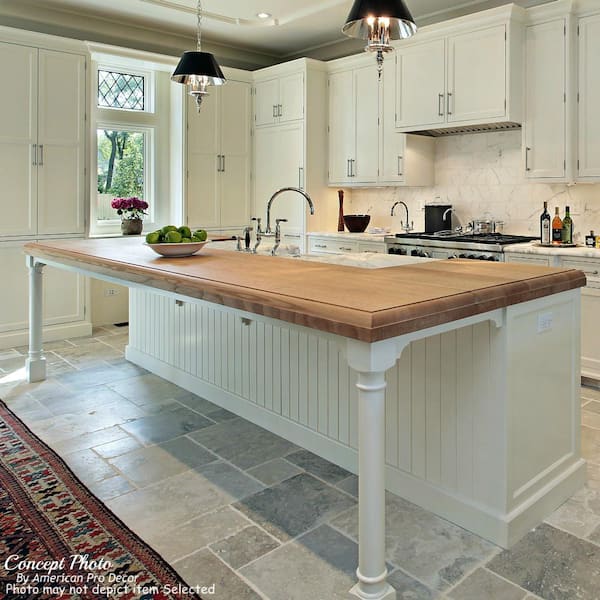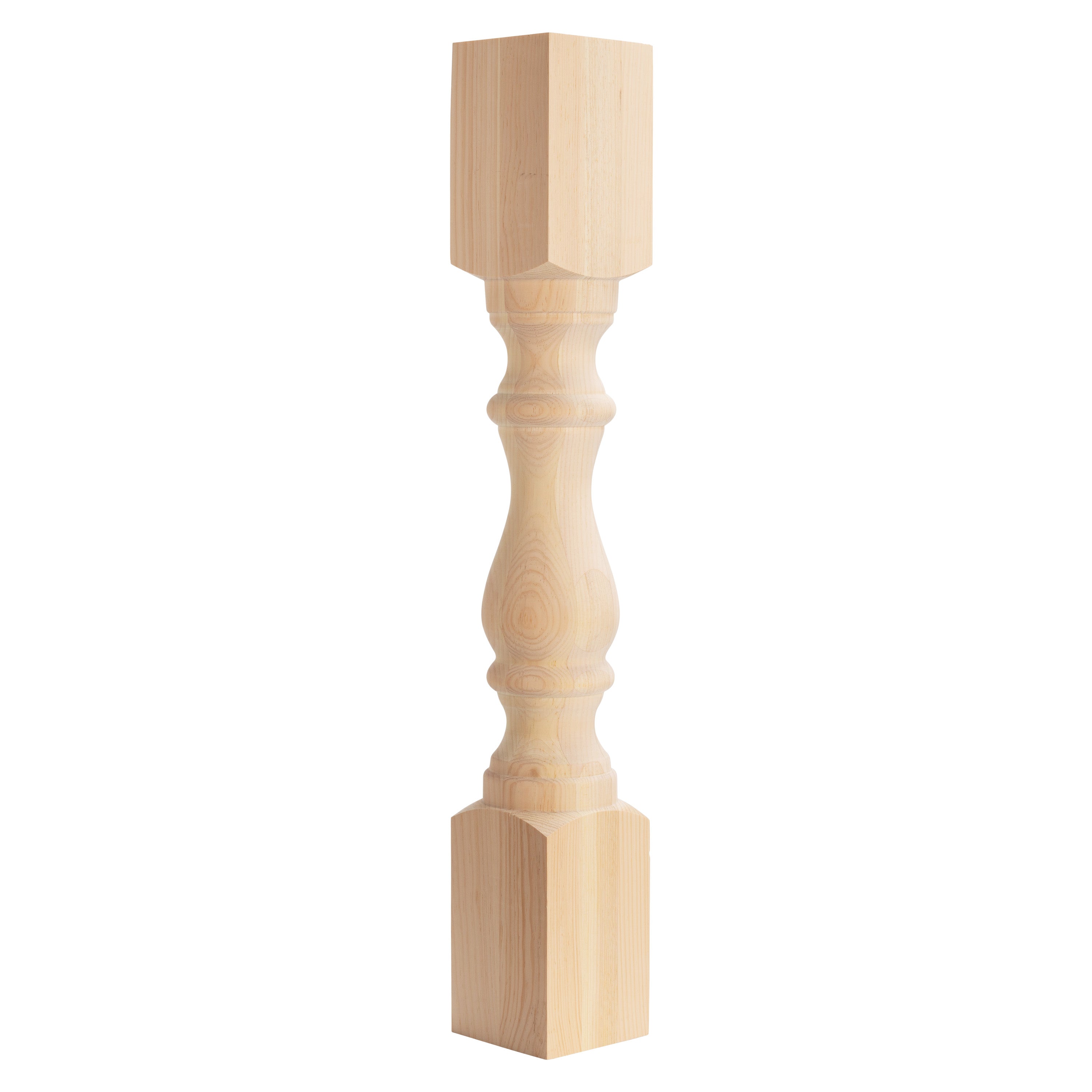The Best Kitchen Island Leg Options for Modern and Standard Kitchens
The Best Kitchen Island Leg Options for Modern and Standard Kitchens
Blog Article
Exploring the Important Attributes of a Kitchen Area Island Leg for Your Culinary Space
The cooking area island serves as a main hub in any cooking area, and the selection of leg style is critical in improving both its functionality and aesthetic allure. Understanding the essential features of kitchen area island legs-- including product alternatives, design styles, and security elements-- can considerably affect the general experience within the cooking area.
Relevance of Cooking Area Island Legs
Kitchen island legs play an important function in both the functionality and aesthetic appeals of a kitchen area. They not just sustain the weight of the island but also enhance the general layout, adding to the kitchen area's aesthetic charm. The option of legs can dictate the design of the cooking area, be it contemporary, standard, or rustic.
Functionally, robust and correctly developed legs make sure security, enabling the secure use the island for numerous tasks such as cooking, eating, or entertaining. Strong legs avoid wobbling and changing, offering a trusted surface area for everyday activities.
In addition, the height and positioning of the legs can influence the convenience level for those seated at the island. A well-considered elevation can suit bar stools or chairs, advertising a welcoming environment for gatherings.
Along with these practical factors to consider, kitchen area island legs can work as a focal factor in the space (kitchen island leg). Attractive or distinctively designed legs can boost the design visual, making the island a focal point. Thus, choosing the right cooking area island legs is necessary for balancing type and feature in any kind of culinary area
Product Options for Legs
Picking the proper product for kitchen island legs dramatically impacts both toughness and design. Typical product alternatives include wood, steel, and stone, each offering distinct benefits.
Wood is a popular option due to its warmth and convenience. It can be easily tailored to match different style styles, from rustic to modern. Woods like oak and maple supply superb stamina and longevity, while softer woods can be much more vulnerable to tear and wear.
Steel legs are favored for their sleek, contemporary visual. kitchen island leg. Stainless steel and light weight aluminum are not only robust but also resistant to corrosion and corrosion, making them suitable for kitchen atmospheres. They can produce a commercial look and are frequently available in numerous finishes to complement various other cooking area aspects
Stone legs, such as granite or marble, add an element of luxury and stability. While larger than various other materials, they use exceptional resilience and can withstand significant weight. Nonetheless, they might require added support to ensure correct balance.
Eventually, the selection of product must line up with both practical demands and the total layout vision of the kitchen area room, ensuring that the island legs boost both energy and visual appeals.
Layout Styles to Take Into Consideration
What layout styles should be taken into consideration when choosing legs for a kitchen area island? The option of leg design dramatically affects the general visual of your culinary room. For a contemporary cooking area, minimalistic and smooth leg styles, such as stainless-steel or geometric shapes, can boost the modern-day appeal, providing a clean and uncluttered look.
On the other hand, standard cooking areas take advantage of classic styles such as turned or sculpted wooden legs, which include heat and character. These alternatives typically feature intricate information that enhance vintage furnishings. For a rustic ambiance, take into consideration legs made from recovered wood or wrought iron, which bring a natural, natural quality to the room.
If you lean in the direction of a commercial motif, robust steel legs with a distressed coating may be suitable, providing an edgy yet innovative touch. In addition, farmhouse style kitchens can incorporate beefy legs that stimulate a feeling of toughness and homeliness.

Height and Security Elements
The elevation and stability of a kitchen island are critical components that straight influence its performance and individual experience. An ideal kitchen area island leg must give adequate height to accommodate a range of tasks, from cooking to laid-back dining. Typically, cooking area islands stand between 36 to 42 inches high, lining up with common counter and bar elevations. This array a knockout post makes sure convenience for individuals while executing different activities, thus boosting the total usability of the space.
Stability is similarly crucial, specifically as kitchen islands typically act as centerpieces in culinary atmospheres. A secure leg style decreases wobbling and moving, which can lead to mishaps or pain during usage. Materials such as solid timber, metal, or a mix thereof are frequently used to attain the essential durability. Moreover, the leg's add-on to the island's base have to be safe, making certain long life and strength against the deterioration of daily use.
Modification and Devices
Personalization alternatives and accessories for kitchen area island legs can substantially improve both the aesthetic charm and performance of the area. Property owners can pick from a variety of products, including rock, wood, and steel, allowing for smooth assimilation with existing kitchen area decoration. The selection of surface-- be it a natural stain, paint, or powder covering-- additional customizes the appearance, making sure that the island matches the general style theme.
Along with material and coating, property owners may additionally explore the unification of accessories Click This Link such as decorative brackets, adjustable feet, or incorporated shelving. Brackets can use extra support while adding to a rustic or modern-day visual. Flexible feet are especially beneficial for irregular floor covering, making sure the island continues to be stable and level, which is essential for both security and usability.

Conclusion
In final thought, kitchen island legs offer a crucial role in providing security and enhancing the total visual of the cooking area. Customization choices and accessories can elevate the kitchen island, making it an unique focal factor within the home.
The kitchen island serves as a central center in any type of culinary room, and the option of leg style is essential in enhancing both its he said performance and aesthetic allure. Comprehending the essential attributes of kitchen island legs-- consisting of product alternatives, layout styles, and security elements-- can considerably influence the general experience within the kitchen.Cooking area island legs play a vital duty in both the performance and appearances of a kitchen area area.What layout styles should be thought about when selecting legs for a kitchen area island?In final thought, kitchen island legs offer a vital role in giving stability and boosting the general visual of the culinary area.
Report this page